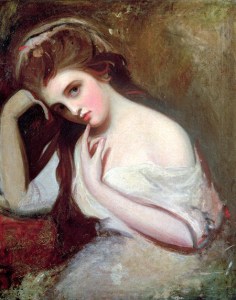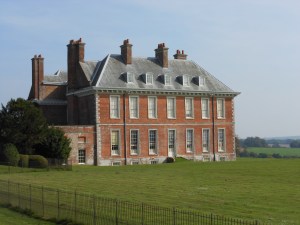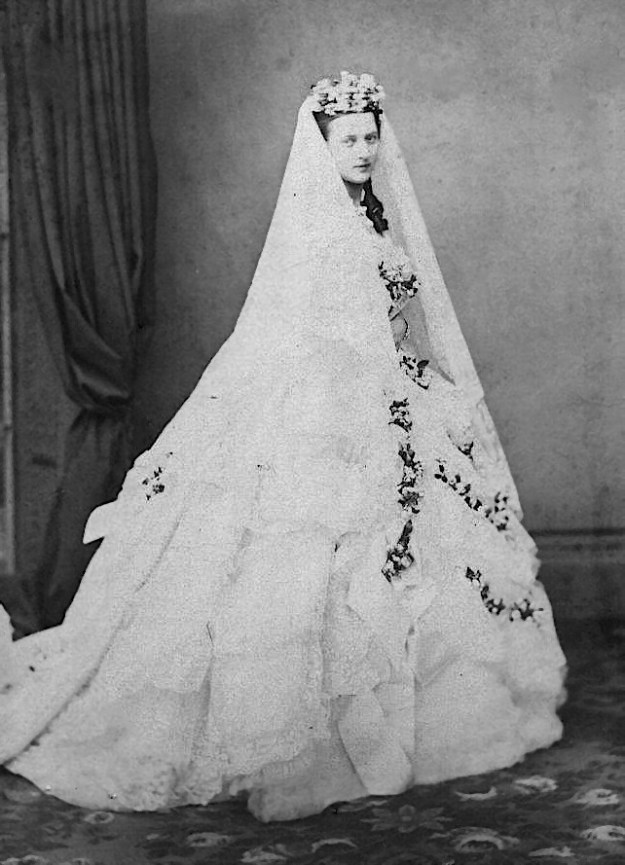
When Princess Alexandra of Denmark married the Prince of Wales, in 1863, to judge from the photograph, she looked a bit like a wedding cake. The silk satin dress was festooned with tulle and specially made Honiton lace which featured English roses, Irish shamrocks and Scottish thistles. It was all very fitting for the 18-year-old who was marrying the son and heir of Queen Victoria. The dress’s train was 21 feet long and required eight bridesmaids to carry it. The photo above, Public Domain, was taken by John Jabez Edwin Mayall. Alexandra was the first royal bride to be photographed wearing her wedding dress.

I recently saw that very dress in a special exhibit at the Costume Museum in Bath, England. But wait, what happened? According to the placard, the original dress was designed by Mrs. James of London for the wedding, then remodeled that same year by Madame Elise, also of London. If I had rented the audioguide, I would probably know more about why and how this happened.

I assume that even a princess in those days might be practical and frugal enough to remake a fancy dress so as to get more use out of it. To a modern eye, the remodeled dress is much more elegant. The skirt must have been made more sleek, and some of the royal crinolines packed away for another time. (I’d cheerfully wear this dress if I were invited to a grand enough occasion. Go ahead, invite me!) This will definitely not happen with Meghan Markle’s dress after her marriage to Prince Harry. Royal wedding dresses these days cost several hundred thousand dollars, and they go straight to preservation and later display.
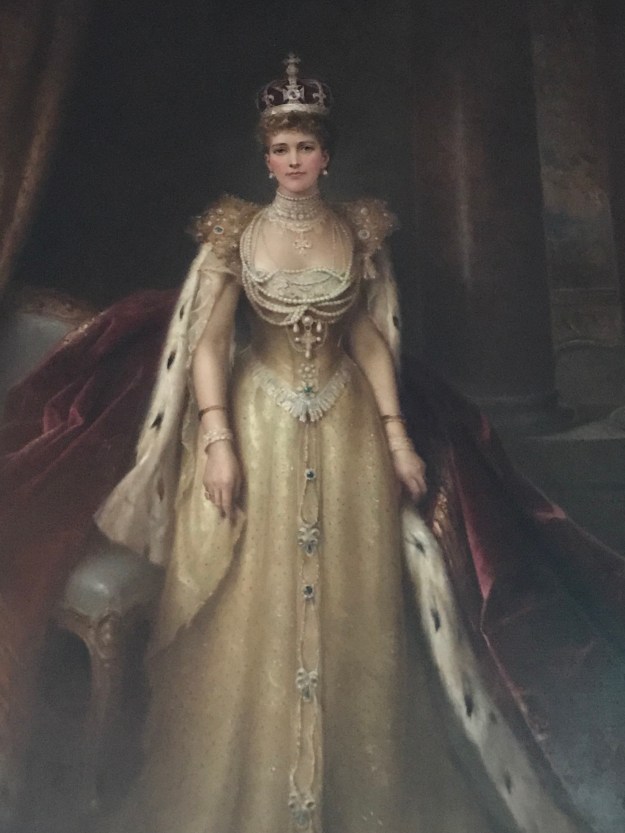
Princess Alexandra was known for her elegance and style. (In fact, she was so avidly followed that when an illness left her with a limp, all the stylish ladies hobbled around with the Alexandra Limp). She reportedly favored slimmer, simpler silhouettes than her new mother-in-law, Queen Victoria. That’s Alexandra above, in a portrait now in Fredericksburg Castle in Denmark. It’s by Edward Hughes, 1904. (This would be after her husband, Prince Albert Edward, became King Edward VII, and she became Queen and also Empress of the British Empire).

Here’s another of Alexandra’s dresses, elegant in its comparative simplicity.
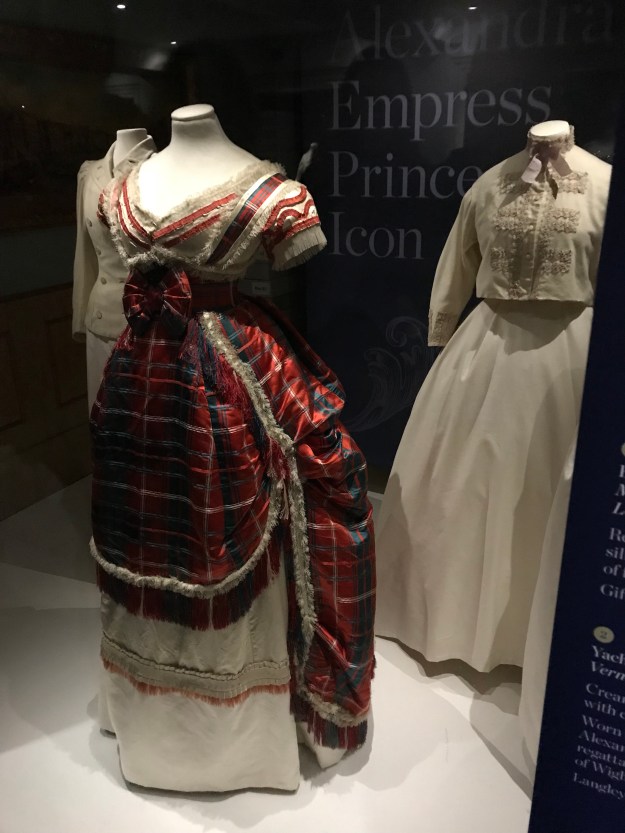
This gown was most likely made and worn for a visit to Holyrood, the royal residence in Edinburgh.
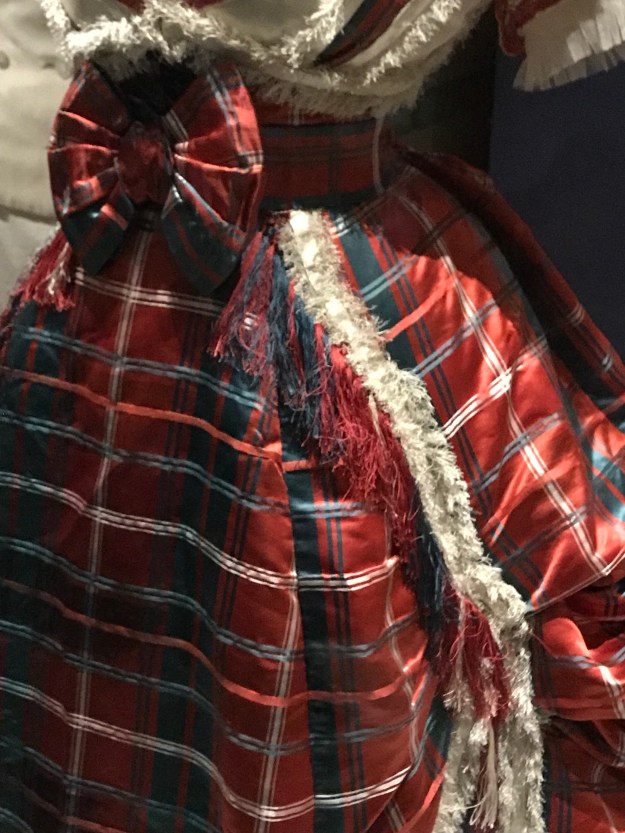
Then as now, royals dressed carefully for visits. If I were invited to a formal dinner in Scotland, I’d cheerfully wear tartan taffeta.

After she became Queen, Alexandra added more sparkle to her gowns with elaborate beading. But the silhouette became even more sleek.
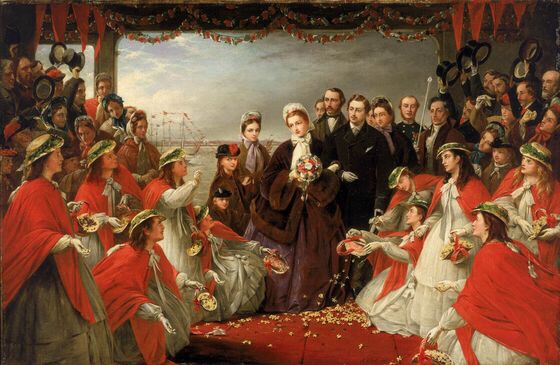
The arrival of Alexandra for her wedding was a grand occasion, painted by Henry Nelson O’Neil: “The Landing of H.R.H. the Princess Alexandra at Gravesend,” March 7 1863, Public Domain.
The marriage seemed to be a happy one, although even after he became King, Alexandra’s husband enjoyed the company of a string of mistresses. They had six children.

In her homeland of Denmark, Alexandra sponsored the building of a very English-looking church for British residents, 1885-7. It’s St. Alban’s Anglican in Copenhagen, pictured above. (Photo is by Blake Handley, Creative Commons Attribution 2.0).

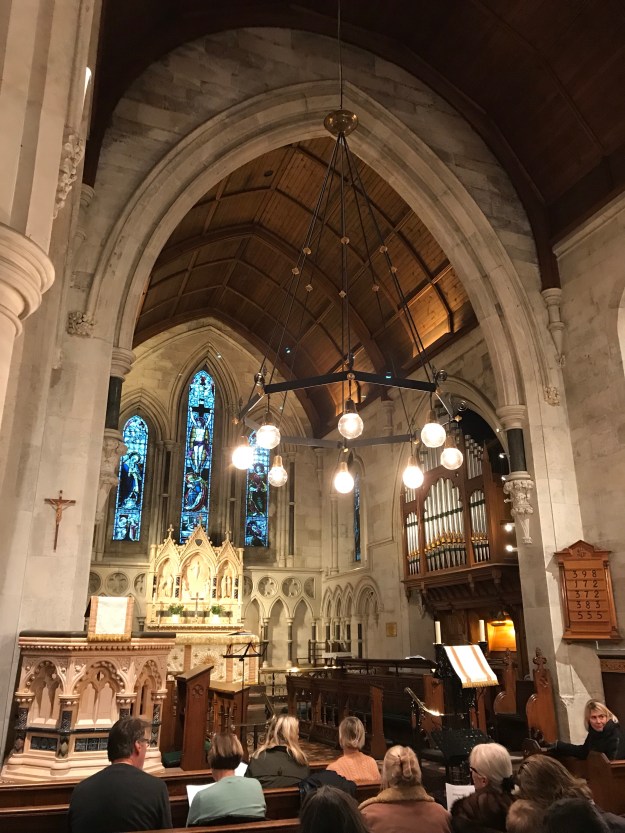
I was lucky enough to take in a Christmas concert at St. Alban’s last December, and admired a memorial plaque honoring Alexandra.
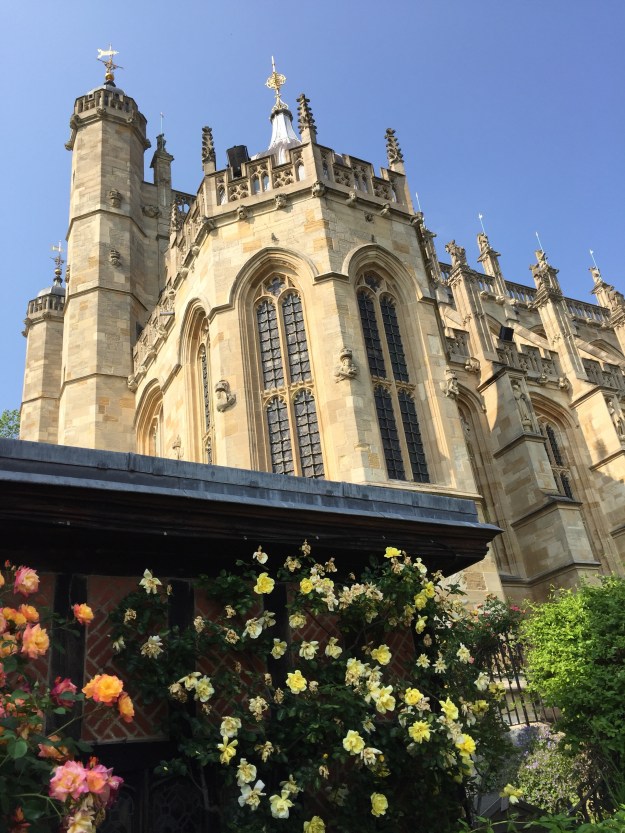
Alexandra’s wedding took place in St. George’s Chapel on the grounds of Windsor Castle. It’s one of the most beautiful and evocative churches I’ve ever been in, but photos are not allowed inside. I’m sure the excitement ahead of the royal wedding is intense, but then again this is a real parish church with everyday business to attend to.
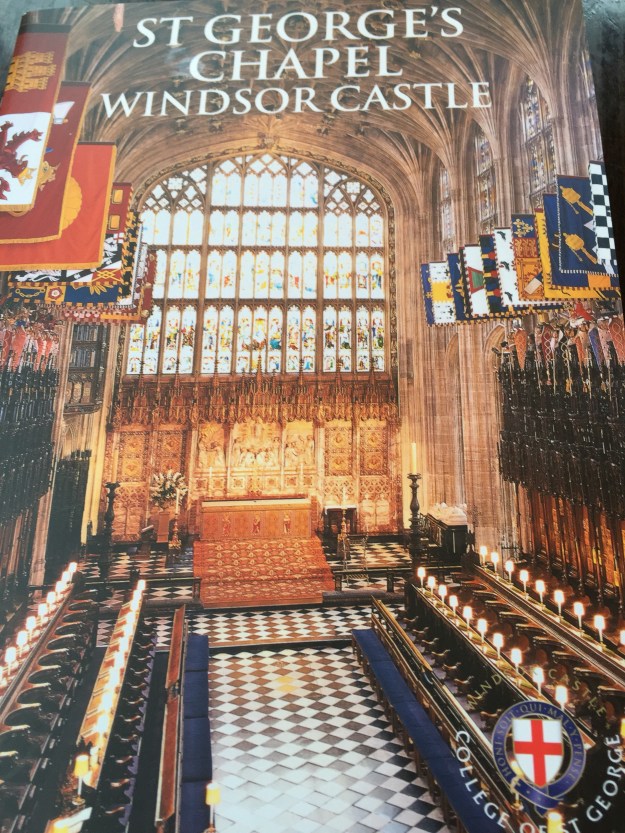

As on most evenings, Evensong is probably happening–a small, intimate service which I highly recommend. (Many Anglican churches have either Evensong or Evening Prayer–a restful end to a tourist’s day). The evening I attended at Windsor, I was disappointed that I missed the Boys’ Choir. But a choir of girls had been invited instead. No photos were allowed inside, but excited girls in blue dresses, and their parents, had a once-in-a-lifetime experience–and the girls sang beautifully.


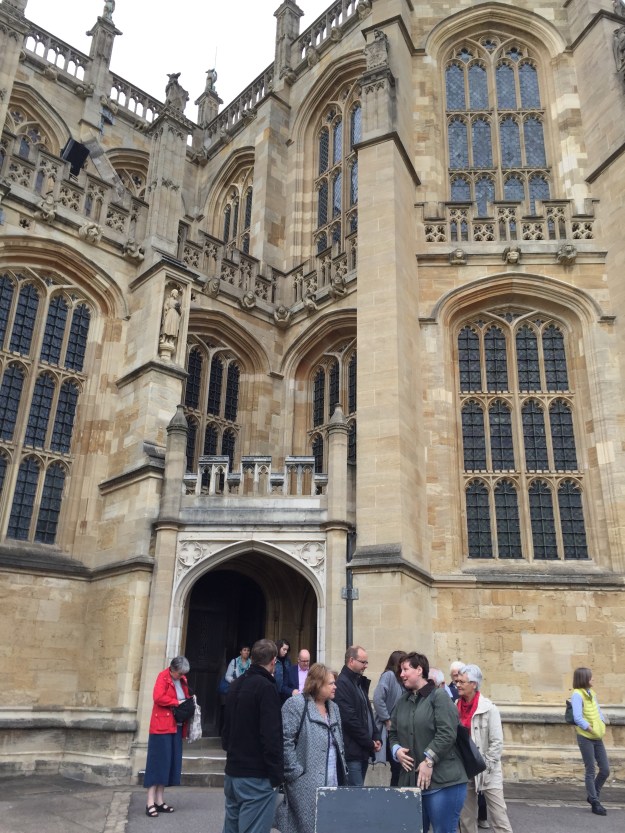
Will I be watching the royal wedding on May 19? Oh, yes! I’m looking forward to seeing a bit of the pomp and pageantry. I’ll be with two of my granddaughters, explaining to them why Britain still has royalty and why this marriage is significant. To honor the occasion properly, I stopped at the local Dollar Store to get tiaras for us all to wear, plus crepe paper and such to decorate the living room. We’ll be wishing Harry and Meghan a long and happy life together. (And drinking tea and eating scones warm from the oven, of course–the wedding is at 6:00 am where I am in the USA).

Postscript, post-wedding: Meghan Markle was a breathtaking bride in a classically sleek wedding gown by Claire Waight Keller of Givenchy.
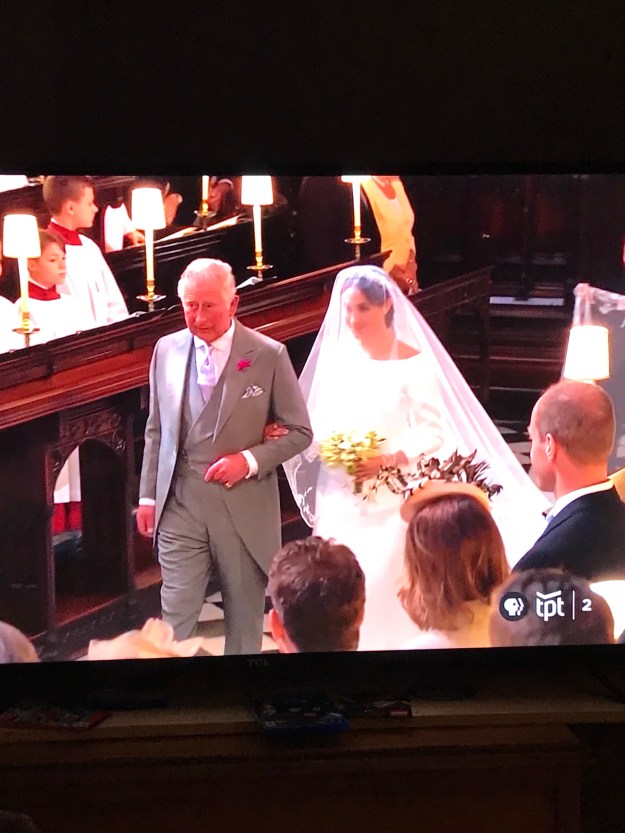
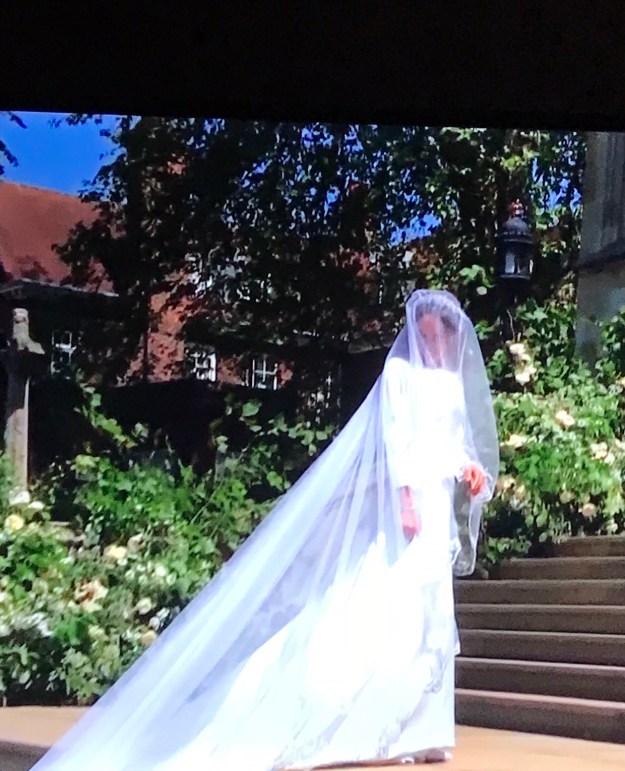
Here are some more of my excited screenshots. It sounds as though this royal bride will make social consciousness and public service her life’s work now. In my opinion, this is what makes all the pomp and pageantry of royalty worthwhile in today’s world. I wish her the best.
Join me next time for more explorations in the art, culture and history of Europe, Scandinavia and the British Isles!

